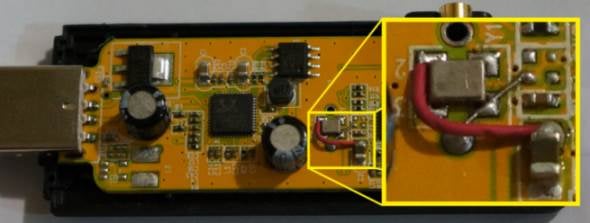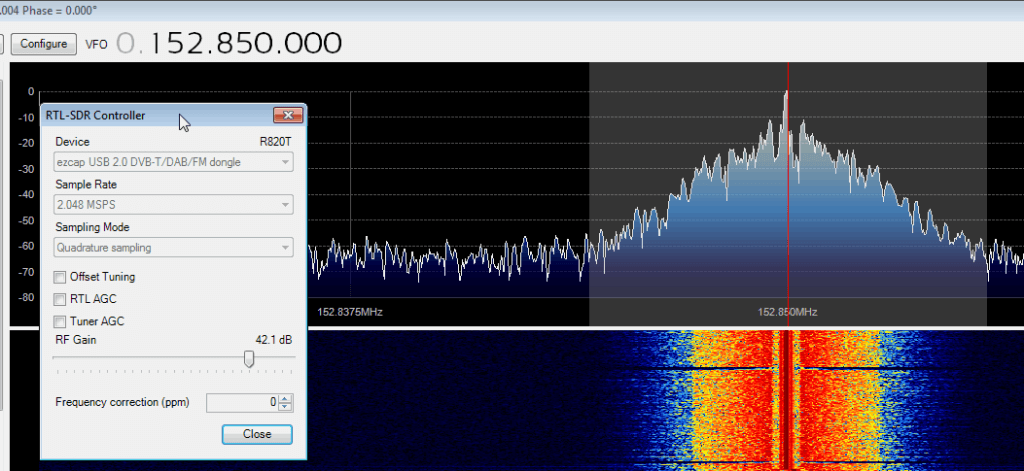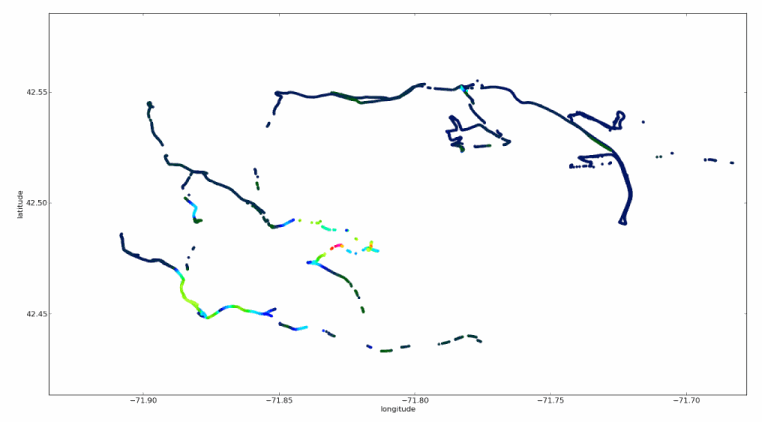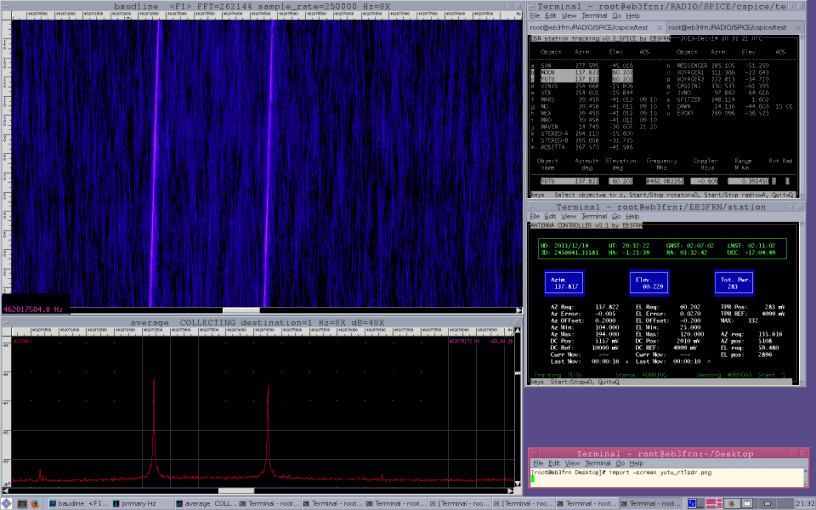Review of the TCXO Modified RTL-SDR Dongle
A few days ago we had a post about a modified RTL-SDR dongle for sale which has the low quality 28.8 MHz oscillator replaced with a high quality 28.8 MHz temperature controlled oscillator.
Nobu Saitou, the creator of these dongles has sent us a sample to review. On the inside of the dongle the 28.8 MHz crystal has been removed, and replaced with a 28.8 MHz temperature controlled oscillator. The desoldering of the old oscillator and soldering of the new TCXO appears to be neatly and professionally done.

After plugging in the dongle and firing up SDR#, we tuned to a known trunking control channel at 152.850 MHz and measured the frequency offset. It turns out that with the TCXO no frequency correction was required at all. I believe that from Nobu’s blog post, this oscillator can have a max deviation of +-2 PPM, which is incredibly small.

We compared this result to a standard dongle with the original oscillator and found the frequency offset required to be 44 PPM.

As the dongle heats up from use, the oscillator will experience thermal drift, causing the frequency offset to change. The TCXO should be immune to this problem due to it’s temperature compensation circuitry. To test the temperature compensation, we cooled both a TCXO dongle and a standard dongle down in a refrigerator first to simulate cool climate conditions. We then measured the change in PPM offset after 30 minutes of dongle operation. As expected, the TCXO had almost zero drift after 30 minutes (<<1 PPM), whereas the standard dongle had a drift of about 6-7 PPM (approx. 1 KHz drift).


The results of this simple test show that the TCXO used in these modified dongles is an accurate and stable frequency source as was expected. If you want one of these dongles they are for sale at the creators Amazon Store (direct link to TCXO product here). Currently it seems that Saitou’s products cannot be sent abroad outside of Japan, but he recommends this agent service for ordering internationally.
Edit: The TCXO can now be bought internationally from 1090mhz.com





